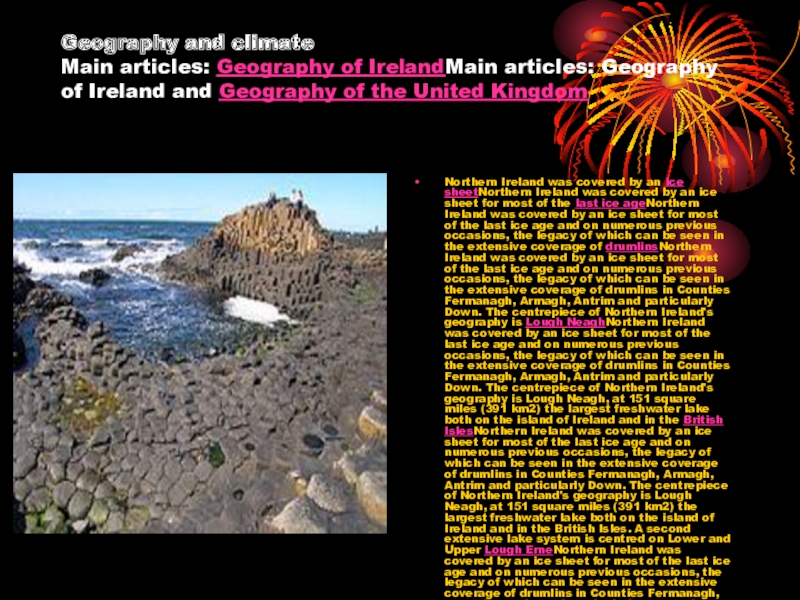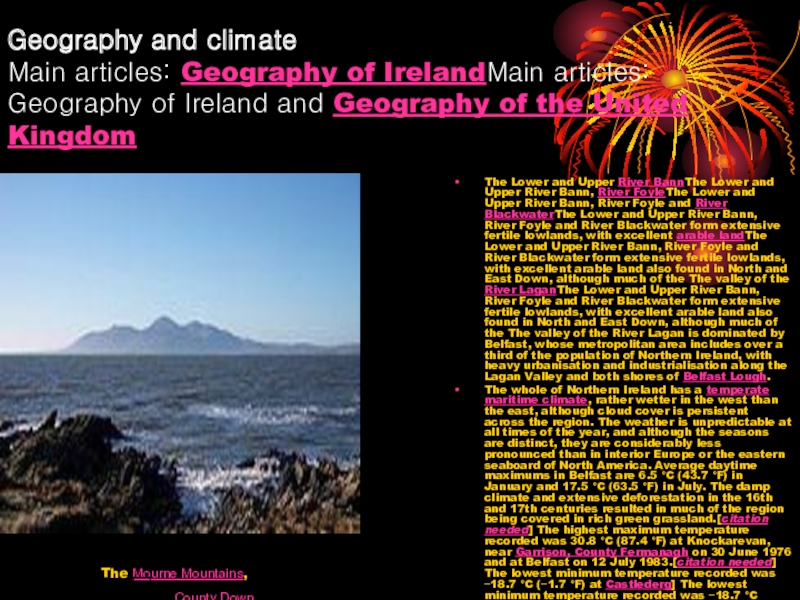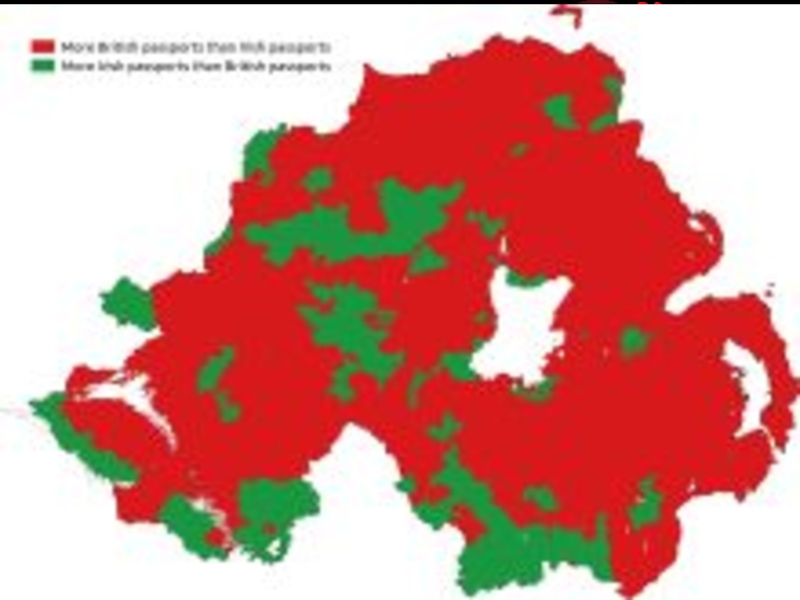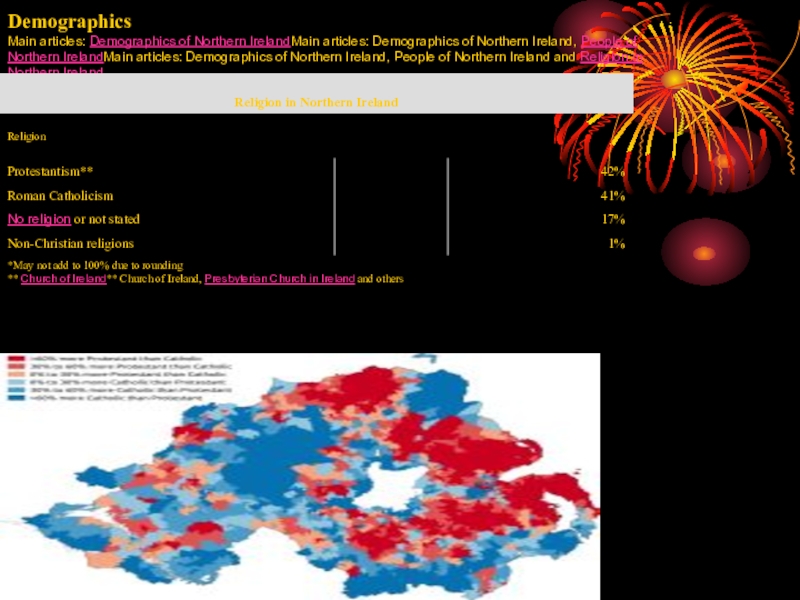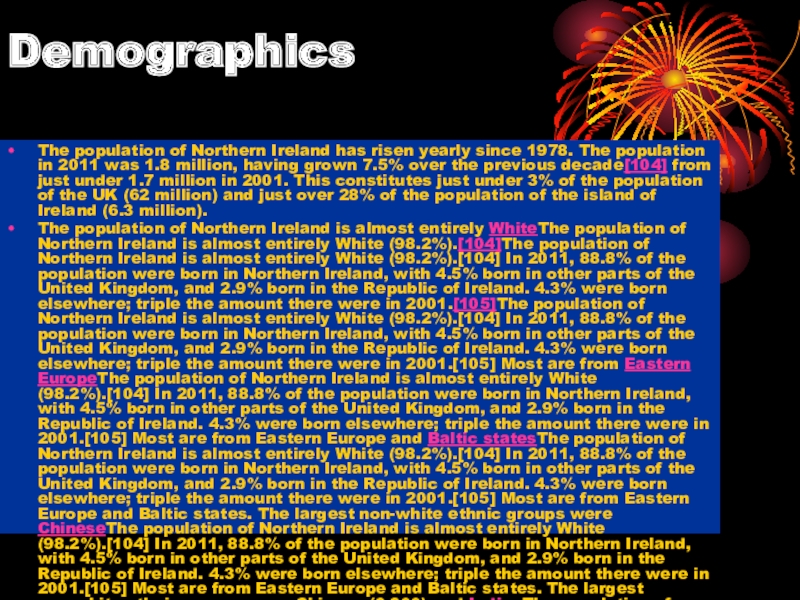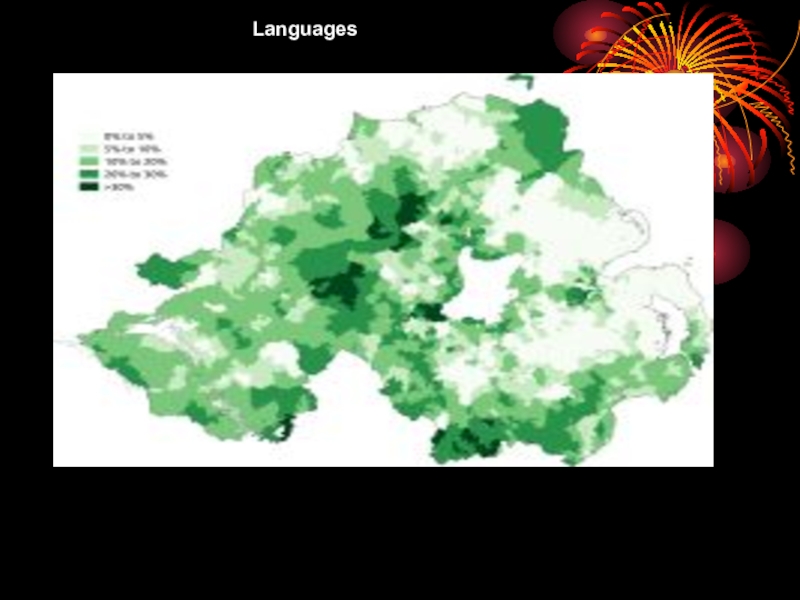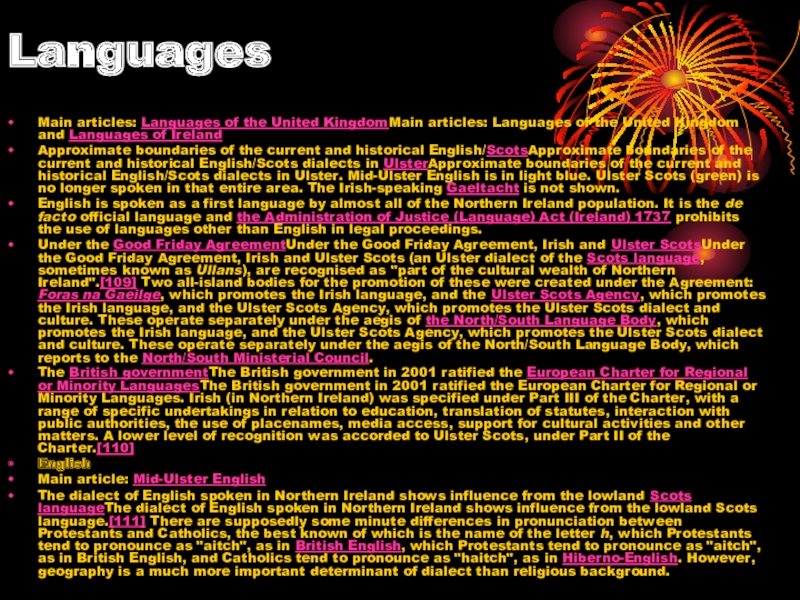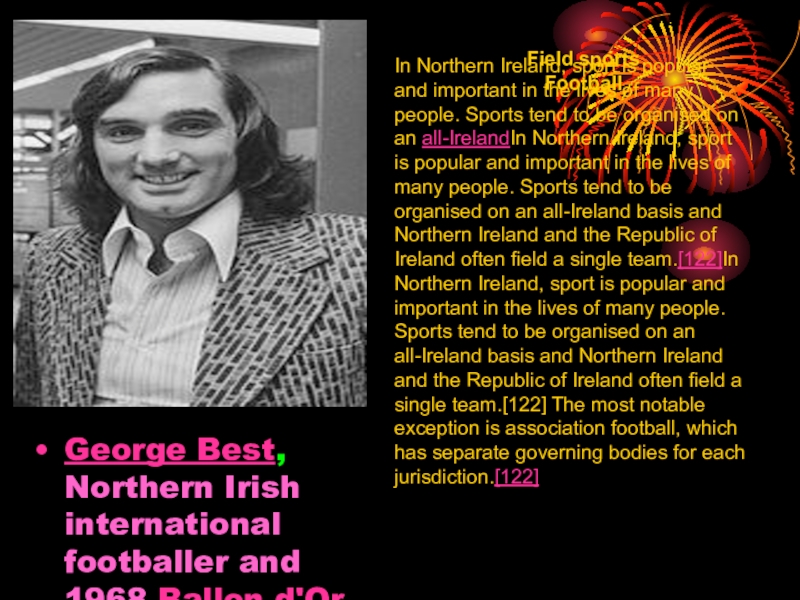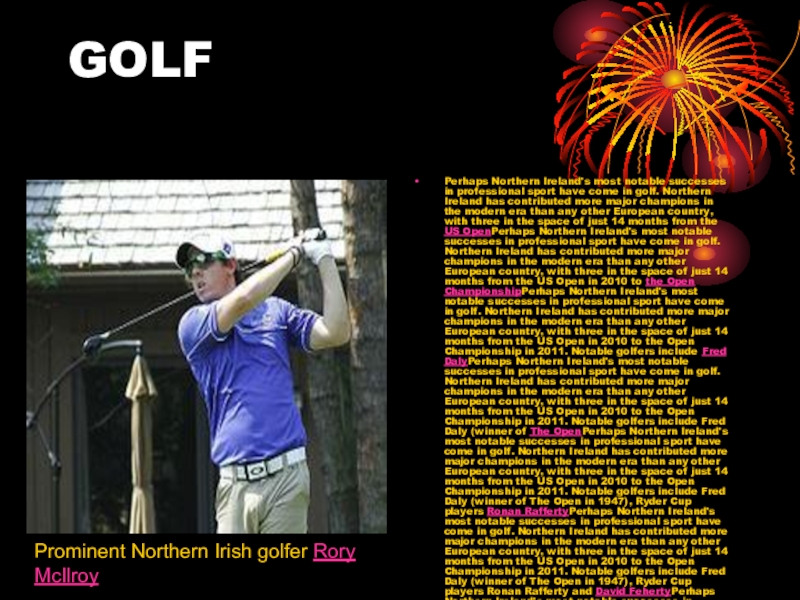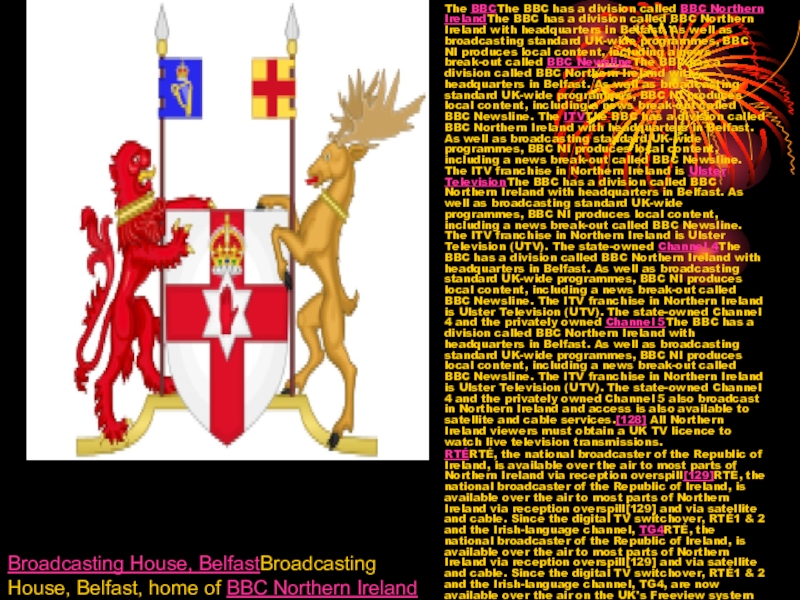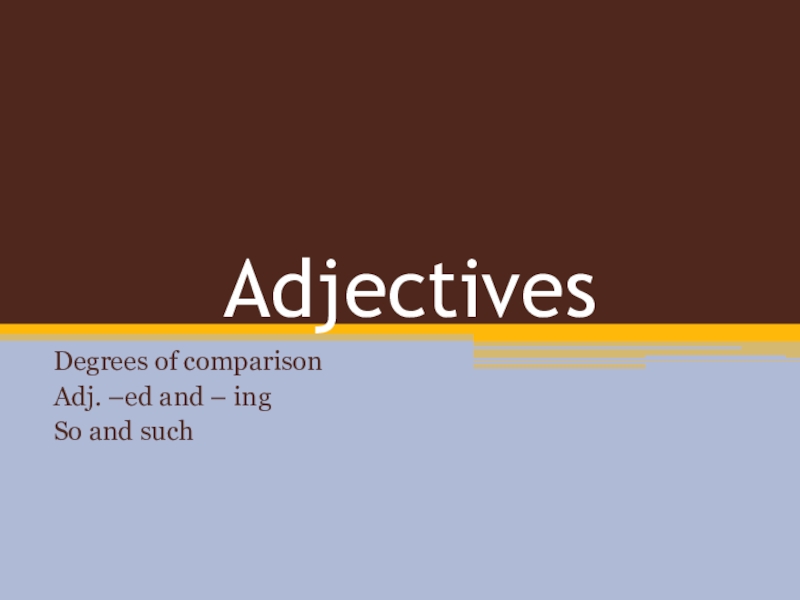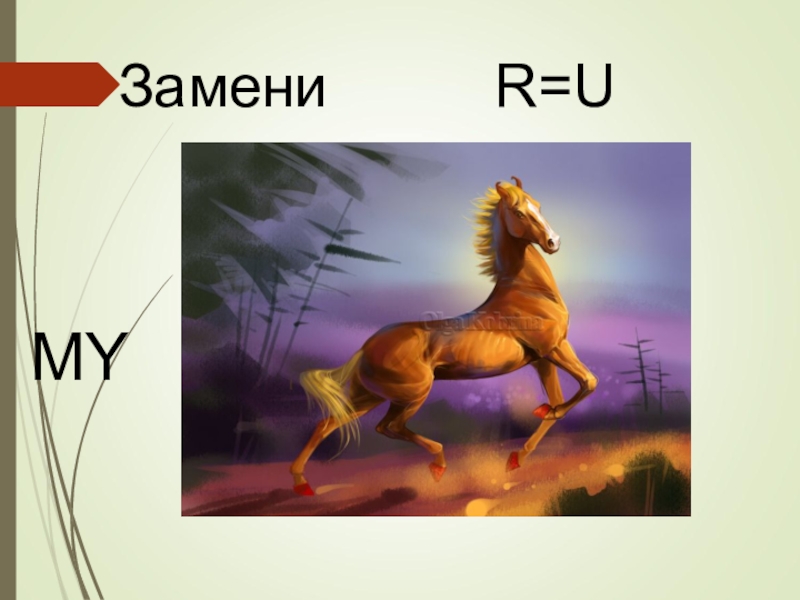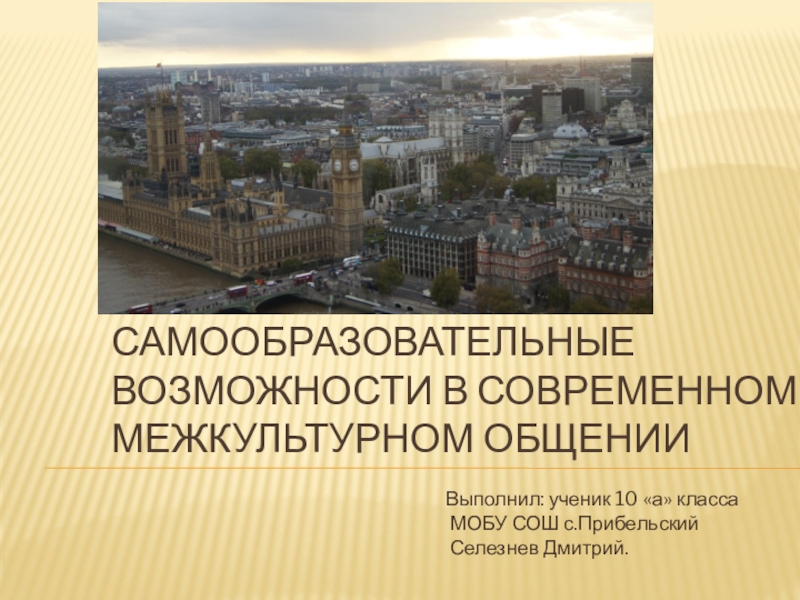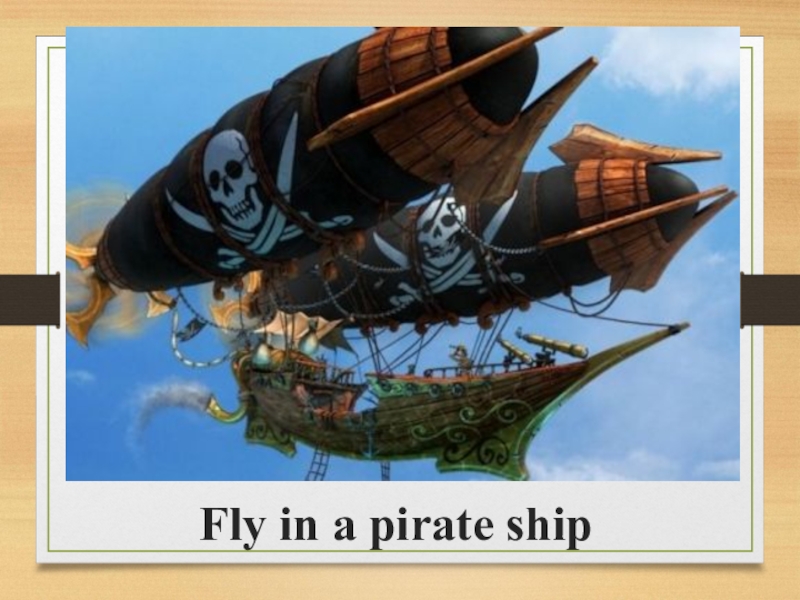- Главная
- Разное
- Образование
- Спорт
- Естествознание
- Природоведение
- Религиоведение
- Французский язык
- Черчение
- Английский язык
- Астрономия
- Алгебра
- Биология
- География
- Геометрия
- Детские презентации
- Информатика
- История
- Литература
- Математика
- Музыка
- МХК
- Немецкий язык
- ОБЖ
- Обществознание
- Окружающий мир
- Педагогика
- Русский язык
- Технология
- Физика
- Философия
- Химия
- Шаблоны, фоны, картинки для презентаций
- Экология
- Экономика
Презентация, доклад по англикий на тему Британия
Содержание
- 1. Презентация по англикий на тему Британия
- 2. During the Home Rule Crisis the possibility
- 3. Northern Ireland (Irish: Tuaisceart Éireann[6] [ˈt̪ˠuəʃcəɾˠt̪ˠ ˈeːɾʲən̪ˠ] (
- 4. Cities and towns by populationCities and towns by population[107] ]
- 5. Geography and climate Main articles: Geography of
- 6. Geography and climate Main articles: Geography
- 7. Belfast
- 8. Belfast DemographicsMain articles: Demographics of Northern IrelandMain
- 9. Demographics The population of Northern Ireland has
- 10. Irish Languages
- 11. Languages Main articles: Languages of the United
- 12. Sport
- 13. George Best, Northern Irish international footballer and
- 14. GOLFPerhaps Northern Ireland's most notable successes in
- 15. The BBCThe BBC has a division called
- 16. Thank you
Слайд 2
During the Home Rule Crisis the possibility was discussed of a
Слайд 3Northern Ireland (Irish: Tuaisceart Éireann[6] [ˈt̪ˠuəʃcəɾˠt̪ˠ ˈeːɾʲən̪ˠ] (
listen); Ulster Scots: Norlin
Northern Ireland was created in 1921, when Ireland was partitionedNorthern Ireland was created in 1921, when Ireland was partitioned between Northern Ireland and Southern IrelandNorthern Ireland was created in 1921, when Ireland was partitioned between Northern Ireland and Southern Ireland by an actNorthern Ireland was created in 1921, when Ireland was partitioned between Northern Ireland and Southern Ireland by an act of the British parliament. Unlike Southern Ireland, which would become the Irish Free StateNorthern Ireland was created in 1921, when Ireland was partitioned between Northern Ireland and Southern Ireland by an act of the British parliament. Unlike Southern Ireland, which would become the Irish Free State in 1922, the majority of Northern Ireland's population were unionistsNorthern Ireland was created in 1921, when Ireland was partitioned between Northern Ireland and Southern Ireland by an act of the British parliament. Unlike Southern Ireland, which would become the Irish Free State in 1922, the majority of Northern Ireland's population were unionists or loyalists, who wanted to remain within the United Kingdom.[11] Most of these were the Protestant Most of these were the Protestant descendants of colonists from Great Britain Most of these were the Protestant descendants of colonists from Great Britain; however, a significant minority, mostly Catholics Most of these were the Protestant descendants of colonists from Great Britain; however, a significant minority, mostly Catholics, were nationalists Most of these were the Protestant descendants of colonists from Great Britain; however, a significant minority, mostly Catholics, were nationalists or republicans Most of these were the Protestant descendants of colonists from Great Britain; however, a significant minority, mostly Catholics, were nationalists or republicans who wanted a united Ireland independent of British rule.[12][12][13][12][13][14][12][13][14][15] Today, the former generally see themselves as British and the latter generally see themselves as Irish; some people from both communities describe themselves as Northern Irish.[16] Historically, Northern Ireland was marked by discrimination and hostility between these two communities in what Nobel Peace Prize Historically, Northern Ireland was marked by discrimination and hostility between these two communities in what Nobel Peace Prize-winner David Trimble Historically, Northern Ireland was marked by discrimination and hostility between these two communities in what Nobel Peace Prize-winner David Trimble called a "cold house" for Catholics. In the late 1960s, conflict between the two communities, and involving state forces, erupted into three decades of violence known as the Troubles, which claimed over 3,000 lives and caused over 50,000 casualties.[17] The Good Friday Agreement in 1998 was a major step in the peace process The Good Friday Agreement in 1998 was a major step in the peace process although sectarianism and religious segregation still remain major social problems.
Слайд 5Geography and climate Main articles: Geography of IrelandMain articles: Geography of Ireland
Northern Ireland was covered by an ice sheetNorthern Ireland was covered by an ice sheet for most of the last ice ageNorthern Ireland was covered by an ice sheet for most of the last ice age and on numerous previous occasions, the legacy of which can be seen in the extensive coverage of drumlinsNorthern Ireland was covered by an ice sheet for most of the last ice age and on numerous previous occasions, the legacy of which can be seen in the extensive coverage of drumlins in Counties Fermanagh, Armagh, Antrim and particularly Down. The centrepiece of Northern Ireland's geography is Lough NeaghNorthern Ireland was covered by an ice sheet for most of the last ice age and on numerous previous occasions, the legacy of which can be seen in the extensive coverage of drumlins in Counties Fermanagh, Armagh, Antrim and particularly Down. The centrepiece of Northern Ireland's geography is Lough Neagh, at 151 square miles (391 km2) the largest freshwater lake both on the island of Ireland and in the British IslesNorthern Ireland was covered by an ice sheet for most of the last ice age and on numerous previous occasions, the legacy of which can be seen in the extensive coverage of drumlins in Counties Fermanagh, Armagh, Antrim and particularly Down. The centrepiece of Northern Ireland's geography is Lough Neagh, at 151 square miles (391 km2) the largest freshwater lake both on the island of Ireland and in the British Isles. A second extensive lake system is centred on Lower and Upper Lough ErneNorthern Ireland was covered by an ice sheet for most of the last ice age and on numerous previous occasions, the legacy of which can be seen in the extensive coverage of drumlins in Counties Fermanagh, Armagh, Antrim and particularly Down. The centrepiece of Northern Ireland's geography is Lough Neagh, at 151 square miles (391 km2) the largest freshwater lake both on the island of Ireland and in the British Isles. A second extensive lake system is centred on Lower and Upper Lough Erne in Fermanagh. The largest island of Northern Ireland is RathlinNorthern Ireland was covered by an ice sheet for most of the last ice age and on numerous previous occasions, the legacy of which can be seen in the extensive coverage of drumlins in Counties Fermanagh, Armagh, Antrim and particularly Down. The centrepiece of Northern Ireland's geography is Lough Neagh, at 151 square miles (391 km2) the largest freshwater lake both on the island of Ireland and in the British Isles. A second extensive lake system is centred on Lower and Upper Lough Erne in Fermanagh. The largest island of Northern Ireland is Rathlin, off the north Antrim coast. Strangford Lough is the largest inlet in the British Isles, covering 150 km2 (58 sq mi).
There are substantial uplands in the Sperrin MountainsThere are substantial uplands in the Sperrin Mountains (an extension of the Caledonian mountain beltThere are substantial uplands in the Sperrin Mountains (an extension of the Caledonian mountain belt) with extensive gold deposits, graniteThere are substantial uplands in the Sperrin Mountains (an extension of the Caledonian mountain belt) with extensive gold deposits, granite Mourne MountainsThere are substantial uplands in the Sperrin Mountains (an extension of the Caledonian mountain belt) with extensive gold deposits, granite Mourne Mountains and basaltThere are substantial uplands in the Sperrin Mountains (an extension of the Caledonian mountain belt) with extensive gold deposits, granite Mourne Mountains and basalt Antrim PlateauThere are substantial uplands in the Sperrin Mountains (an extension of the Caledonian mountain belt) with extensive gold deposits, granite Mourne Mountains and basalt Antrim Plateau, as well as smaller ranges in South ArmaghThere are substantial uplands in the Sperrin Mountains (an extension of the Caledonian mountain belt) with extensive gold deposits, granite Mourne Mountains and basalt Antrim Plateau, as well as smaller ranges in South Armagh and along the Fermanagh–Tyrone border. None of the hills are especially high, with Slieve DonardThere are substantial uplands in the Sperrin Mountains (an extension of the Caledonian mountain belt) with extensive gold deposits, granite Mourne Mountains and basalt Antrim Plateau, as well as smaller ranges in South Armagh and along the Fermanagh–Tyrone border. None of the hills are especially high, with Slieve Donard in the dramatic Mournes reaching 850 metres (2,789 ft), Northern Ireland's highest point. Belfast's most prominent peak is CavehillThere are substantial uplands in the Sperrin Mountains (an extension of the Caledonian mountain belt) with extensive gold deposits, granite Mourne Mountains and basalt Antrim Plateau, as well as smaller ranges in South Armagh and along the Fermanagh–Tyrone border. None of the hills are especially high, with Slieve Donard in the dramatic Mournes reaching 850 metres (2,789 ft), Northern Ireland's highest point. Belfast's most prominent peak is Cavehill. The volcanic activity which created the Antrim Plateau also formed the eerily geometric pillars of the Giant's CausewayThere are substantial uplands in the Sperrin Mountains (an extension of the Caledonian mountain belt) with extensive gold deposits, granite Mourne Mountains and basalt Antrim Plateau, as well as smaller ranges in South Armagh and along the Fermanagh–Tyrone border. None of the hills are especially high, with Slieve Donard in the dramatic Mournes reaching 850 metres (2,789 ft), Northern Ireland's highest point. Belfast's most prominent peak is Cavehill. The volcanic activity which created the Antrim Plateau also formed the eerily geometric pillars of the Giant's Causeway on the north Antrim coast. Also in north Antrim are the Carrick-a-Rede Rope BridgeThere are substantial uplands in the Sperrin Mountains (an extension of the Caledonian mountain belt) with extensive gold deposits, granite Mourne Mountains and basalt Antrim Plateau, as well as smaller ranges in South Armagh and along the Fermanagh–Tyrone border. None of the hills are especially high, with Slieve Donard in the dramatic Mournes reaching 850 metres (2,789 ft), Northern Ireland's highest point. Belfast's most prominent peak is Cavehill. The volcanic activity which created the Antrim Plateau also formed the eerily geometric pillars of the Giant's Causeway on the north Antrim coast. Also in north Antrim are the Carrick-a-Rede Rope Bridge, Mussenden TempleThere are substantial uplands in the Sperrin Mountains (an extension of the Caledonian mountain belt) with extensive gold deposits, granite Mourne Mountains and basalt Antrim Plateau, as well as smaller ranges in South Armagh and along the Fermanagh–Tyrone border. None of the hills are especially high, with Slieve Donard in the dramatic Mournes reaching 850 metres (2,789 ft), Northern Ireland's highest point. Belfast's most prominent peak is Cavehill. The volcanic activity which created the Antrim Plateau also formed the eerily geometric pillars of the Giant's Causeway on the north Antrim coast. Also in north Antrim are the Carrick-a-Rede Rope Bridge, Mussenden Temple and the Glens of Antrim.
Слайд 6Geography and climate Main articles: Geography of IrelandMain articles: Geography of
The Lower and Upper River BannThe Lower and Upper River Bann, River FoyleThe Lower and Upper River Bann, River Foyle and River BlackwaterThe Lower and Upper River Bann, River Foyle and River Blackwater form extensive fertile lowlands, with excellent arable landThe Lower and Upper River Bann, River Foyle and River Blackwater form extensive fertile lowlands, with excellent arable land also found in North and East Down, although much of the The valley of the River LaganThe Lower and Upper River Bann, River Foyle and River Blackwater form extensive fertile lowlands, with excellent arable land also found in North and East Down, although much of the The valley of the River Lagan is dominated by Belfast, whose metropolitan area includes over a third of the population of Northern Ireland, with heavy urbanisation and industrialisation along the Lagan Valley and both shores of Belfast Lough.
The whole of Northern Ireland has a temperate maritime climate, rather wetter in the west than the east, although cloud cover is persistent across the region. The weather is unpredictable at all times of the year, and although the seasons are distinct, they are considerably less pronounced than in interior Europe or the eastern seaboard of North America. Average daytime maximums in Belfast are 6.5 °C (43.7 °F) in January and 17.5 °C (63.5 °F) in July. The damp climate and extensive deforestation in the 16th and 17th centuries resulted in much of the region being covered in rich green grassland.[citation needed] The highest maximum temperature recorded was 30.8 °C (87.4 °F) at Knockarevan, near Garrison, County Fermanagh on 30 June 1976 and at Belfast on 12 July 1983.[citation needed] The lowest minimum temperature recorded was −18.7 °C (−1.7 °F) at Castlederg] The lowest minimum temperature recorded was −18.7 °C (−1.7 °F) at Castlederg, County Tyrone] The lowest minimum temperature recorded was −18.7 °C (−1.7 °F) at Castlederg, County Tyrone on 23 December 2010.[60]
The Mourne Mountains,
County Down
Слайд 8
Belfast
Demographics
Main articles: Demographics of Northern IrelandMain articles: Demographics of Northern Ireland,
Слайд 9Demographics
The population of Northern Ireland has risen yearly since 1978. The
The population of Northern Ireland is almost entirely WhiteThe population of Northern Ireland is almost entirely White (98.2%).[104]The population of Northern Ireland is almost entirely White (98.2%).[104] In 2011, 88.8% of the population were born in Northern Ireland, with 4.5% born in other parts of the United Kingdom, and 2.9% born in the Republic of Ireland. 4.3% were born elsewhere; triple the amount there were in 2001.[105]The population of Northern Ireland is almost entirely White (98.2%).[104] In 2011, 88.8% of the population were born in Northern Ireland, with 4.5% born in other parts of the United Kingdom, and 2.9% born in the Republic of Ireland. 4.3% were born elsewhere; triple the amount there were in 2001.[105] Most are from Eastern EuropeThe population of Northern Ireland is almost entirely White (98.2%).[104] In 2011, 88.8% of the population were born in Northern Ireland, with 4.5% born in other parts of the United Kingdom, and 2.9% born in the Republic of Ireland. 4.3% were born elsewhere; triple the amount there were in 2001.[105] Most are from Eastern Europe and Baltic statesThe population of Northern Ireland is almost entirely White (98.2%).[104] In 2011, 88.8% of the population were born in Northern Ireland, with 4.5% born in other parts of the United Kingdom, and 2.9% born in the Republic of Ireland. 4.3% were born elsewhere; triple the amount there were in 2001.[105] Most are from Eastern Europe and Baltic states. The largest non-white ethnic groups were ChineseThe population of Northern Ireland is almost entirely White (98.2%).[104] In 2011, 88.8% of the population were born in Northern Ireland, with 4.5% born in other parts of the United Kingdom, and 2.9% born in the Republic of Ireland. 4.3% were born elsewhere; triple the amount there were in 2001.[105] Most are from Eastern Europe and Baltic states. The largest non-white ethnic groups were Chinese (6,300) and IndianThe population of Northern Ireland is almost entirely White (98.2%).[104] In 2011, 88.8% of the population were born in Northern Ireland, with 4.5% born in other parts of the United Kingdom, and 2.9% born in the Republic of Ireland. 4.3% were born elsewhere; triple the amount there were in 2001.[105] Most are from Eastern Europe and Baltic states. The largest non-white ethnic groups were Chinese (6,300) and Indian (6,200). Black peopleThe population of Northern Ireland is almost entirely White (98.2%).[104] In 2011, 88.8% of the population were born in Northern Ireland, with 4.5% born in other parts of the United Kingdom, and 2.9% born in the Republic of Ireland. 4.3% were born elsewhere; triple the amount there were in 2001.[105] Most are from Eastern Europe and Baltic states. The largest non-white ethnic groups were Chinese (6,300) and Indian (6,200). Black people of various origins made up 0.2% of the 2011 population and people of mixed ethnicity made up 0.2%.[106]
In the 2011 census, 41.5% of the population identified as belonging to Protestant or other non-Roman Catholic Christian denominations. The biggest of these denominations were the Presbyterian ChurchIn the 2011 census, 41.5% of the population identified as belonging to Protestant or other non-Roman Catholic Christian denominations. The biggest of these denominations were the Presbyterian Church (19%), the Church of IrelandIn the 2011 census, 41.5% of the population identified as belonging to Protestant or other non-Roman Catholic Christian denominations. The biggest of these denominations were the Presbyterian Church (19%), the Church of Ireland (14%) and the Methodist ChurchIn the 2011 census, 41.5% of the population identified as belonging to Protestant or other non-Roman Catholic Christian denominations. The biggest of these denominations were the Presbyterian Church (19%), the Church of Ireland (14%) and the Methodist Church (3%). The largest single denomination is the Roman Catholic ChurchIn the 2011 census, 41.5% of the population identified as belonging to Protestant or other non-Roman Catholic Christian denominations. The biggest of these denominations were the Presbyterian Church (19%), the Church of Ireland (14%) and the Methodist Church (3%). The largest single denomination is the Roman Catholic Church, to which 41% of the population belonged. 0.8% identified with non-Christian religions or philosophies, while 17% identified with no religion or did not state one.[106]In the 2011 census, 41.5% of the population identified as belonging to Protestant or other non-Roman Catholic Christian denominations. The biggest of these denominations were the Presbyterian Church (19%), the Church of Ireland (14%) and the Methodist Church (3%). The largest single denomination is the Roman Catholic Church, to which 41% of the population belonged. 0.8% identified with non-Christian religions or philosophies, while 17% identified with no religion or did not state one.[106] In terms of community background (i.e. one's own religion or the religion one was brought up in), 48% of the population came from a Protestant background, 45% from a Catholic background, 0.9% from non-Christian backgrounds and 5.6% non-religious backgrounds.[106]
Слайд 11Languages
Main articles: Languages of the United KingdomMain articles: Languages of the
Approximate boundaries of the current and historical English/ScotsApproximate boundaries of the current and historical English/Scots dialects in UlsterApproximate boundaries of the current and historical English/Scots dialects in Ulster. Mid-Ulster English is in light blue. Ulster Scots (green) is no longer spoken in that entire area. The Irish-speaking Gaeltacht is not shown.
English is spoken as a first language by almost all of the Northern Ireland population. It is the de facto official language and the Administration of Justice (Language) Act (Ireland) 1737 prohibits the use of languages other than English in legal proceedings.
Under the Good Friday AgreementUnder the Good Friday Agreement, Irish and Ulster ScotsUnder the Good Friday Agreement, Irish and Ulster Scots (an Ulster dialect of the Scots language, sometimes known as Ullans), are recognised as "part of the cultural wealth of Northern Ireland".[109] Two all-island bodies for the promotion of these were created under the Agreement: Foras na Gaeilge, which promotes the Irish language, and the Ulster Scots Agency, which promotes the Irish language, and the Ulster Scots Agency, which promotes the Ulster Scots dialect and culture. These operate separately under the aegis of the North/South Language Body, which promotes the Irish language, and the Ulster Scots Agency, which promotes the Ulster Scots dialect and culture. These operate separately under the aegis of the North/South Language Body, which reports to the North/South Ministerial Council.
The British governmentThe British government in 2001 ratified the European Charter for Regional or Minority LanguagesThe British government in 2001 ratified the European Charter for Regional or Minority Languages. Irish (in Northern Ireland) was specified under Part III of the Charter, with a range of specific undertakings in relation to education, translation of statutes, interaction with public authorities, the use of placenames, media access, support for cultural activities and other matters. A lower level of recognition was accorded to Ulster Scots, under Part II of the Charter.[110]
English
Main article: Mid-Ulster English
The dialect of English spoken in Northern Ireland shows influence from the lowland Scots languageThe dialect of English spoken in Northern Ireland shows influence from the lowland Scots language.[111] There are supposedly some minute differences in pronunciation between Protestants and Catholics, the best known of which is the name of the letter h, which Protestants tend to pronounce as "aitch", as in British English, which Protestants tend to pronounce as "aitch", as in British English, and Catholics tend to pronounce as "haitch", as in Hiberno-English. However, geography is a much more important determinant of dialect than religious background.
Слайд 13George Best, Northern Irish international footballer and 1968 Ballon d'Or
Field sports
Football
In
Слайд 14GOLF
Perhaps Northern Ireland's most notable successes in professional sport have come
The Golfing Union of IrelandThe Golfing Union of Ireland, the governing body for men's and boy's amateur golf throughout Ireland and the oldest golfing union in the world, was founded in Belfast in 1891. Northern Ireland's golf courses include the Royal Belfast Golf Club (the earliest, formed in 1881), Royal Portrush Golf ClubThe Golfing Union of Ireland, the governing body for men's and boy's amateur golf throughout Ireland and the oldest golfing union in the world, was founded in Belfast in 1891. Northern Ireland's golf courses include the Royal Belfast Golf Club (the earliest, formed in 1881), Royal Portrush Golf Club, which is the only course outside Great Britain to have hosted The Open ChampionshipThe Golfing Union of Ireland, the governing body for men's and boy's amateur golf throughout Ireland and the oldest golfing union in the world, was founded in Belfast in 1891. Northern Ireland's golf courses include the Royal Belfast Golf Club (the earliest, formed in 1881), Royal Portrush Golf Club, which is the only course outside Great Britain to have hosted The Open Championship, and Royal County Down Golf Club (Golf Digest magazine's top-rated course outside the United States).[125] magazine's top-rated course outside the United States).[125][126]
Golf
Prominent Northern Irish golfer Rory McIlroy
Слайд 15The BBCThe BBC has a division called BBC Northern IrelandThe BBC
RTÉRTÉ, the national broadcaster of the Republic of Ireland, is available over the air to most parts of Northern Ireland via reception overspill[129]RTÉ, the national broadcaster of the Republic of Ireland, is available over the air to most parts of Northern Ireland via reception overspill[129] and via satellite and cable. Since the digital TV switchover, RTÉ1 & 2 and the Irish-language channel, TG4RTÉ, the national broadcaster of the Republic of Ireland, is available over the air to most parts of Northern Ireland via reception overspill[129] and via satellite and cable. Since the digital TV switchover, RTÉ1 & 2 and the Irish-language channel, TG4, are now available over the air on the UK's Freeview system from transmitters within Northern Ireland.[130] Although they are transmitted in standard definition, a Freeview HD box or television is required for reception.
As well as the standard UK-wide radio stations from the BBC, Northern Ireland is home to many local radio stations, such as Cool FMAs well as the standard UK-wide radio stations from the BBC, Northern Ireland is home to many local radio stations, such as Cool FM, CityBeatAs well as the standard UK-wide radio stations from the BBC, Northern Ireland is home to many local radio stations, such as Cool FM, CityBeat, and Q102.9As well as the standard UK-wide radio stations from the BBC, Northern Ireland is home to many local radio stations, such as Cool FM, CityBeat, and Q102.9. The BBC has two regional radio stations which broadcast in Northern Ireland, BBC Radio UlsterAs well as the standard UK-wide radio stations from the BBC, Northern Ireland is home to many local radio stations, such as Cool FM, CityBeat, and Q102.9. The BBC has two regional radio stations which broadcast in Northern Ireland, BBC Radio Ulster and BBC Radio Foyle.
The Belfast Telegraph is the leading newspaper, and UK and Irish national newspapers are also available. There is a range of local newspapers such as the News Letter and the Irish News.[131]
Northern Ireland uses the same telecommunications and postal services as the rest of the United Kingdom at standard domestic rates and there are no mobile roaming charges between Great Britain and Northern Ireland.[132]Northern Ireland uses the same telecommunications and postal services as the rest of the United Kingdom at standard domestic rates and there are no mobile roaming charges between Great Britain and Northern Ireland.[132][133]Northern Ireland uses the same telecommunications and postal services as the rest of the United Kingdom at standard domestic rates and there are no mobile roaming charges between Great Britain and Northern Ireland.[132][133] People in Northern Ireland who live close to the border with the Republic of Ireland may inadvertently switch over to the Irish mobile networks, causing international roaming fees to be applied.[134]Northern Ireland uses the same telecommunications and postal services as the rest of the United Kingdom at standard domestic rates and there are no mobile roaming charges between Great Britain and Northern Ireland.[132][133] People in Northern Ireland who live close to the border with the Republic of Ireland may inadvertently switch over to the Irish mobile networks, causing international roaming fees to be applied.[134] Northern Ireland can be called from the Republic of Ireland at trunk rates, as opposed to international rates, using the 048 prefix.
Broadcasting House, BelfastBroadcasting House, Belfast, home of BBC Northern Ireland
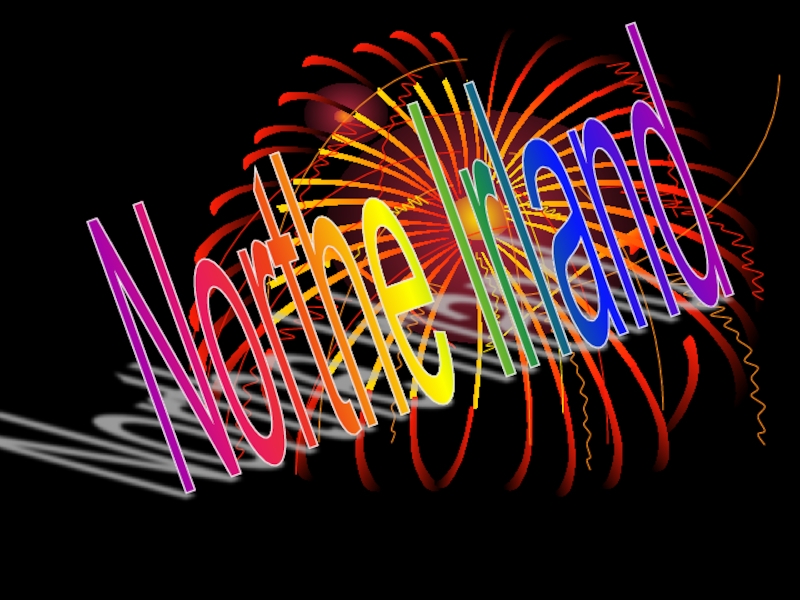
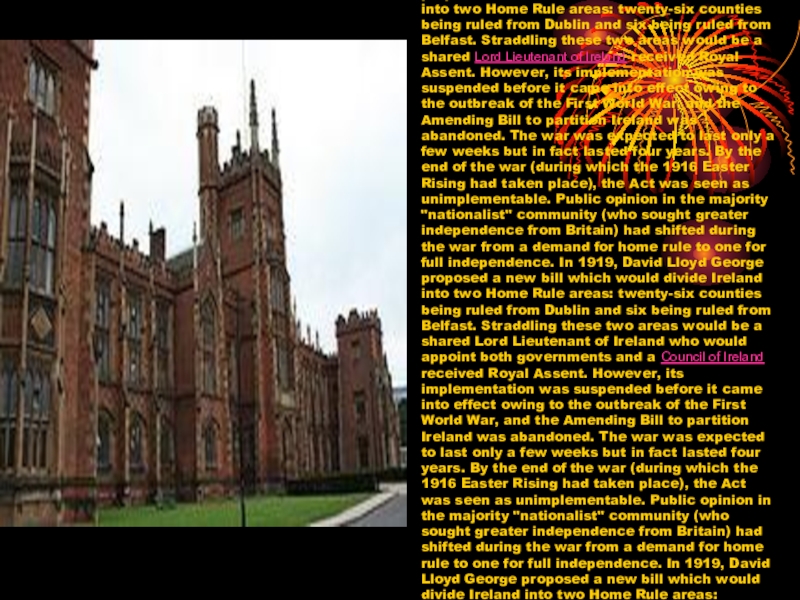
![Презентация по англикий на тему Британия Northern Ireland (Irish: Tuaisceart Éireann[6] [ˈt̪ˠuəʃcəɾˠt̪ˠ ˈeːɾʲən̪ˠ] ( listen); Ulster Scots: Norlin Northern Ireland (Irish: Tuaisceart Éireann[6] [ˈt̪ˠuəʃcəɾˠt̪ˠ ˈeːɾʲən̪ˠ] ( listen); Ulster Scots: Norlin Airlann or Norlin Airlan) is a](/img/thumbs/ddd17180b47e4ce5b252b90f14e6b5ba-800x.jpg)
![Презентация по англикий на тему Британия Cities and towns by populationCities and towns by population[107] ] Cities and towns by populationCities and towns by population[107] ]](/img/tmb/5/451365/1b98e38d75215699a541a8b44679791c-800x.jpg)
